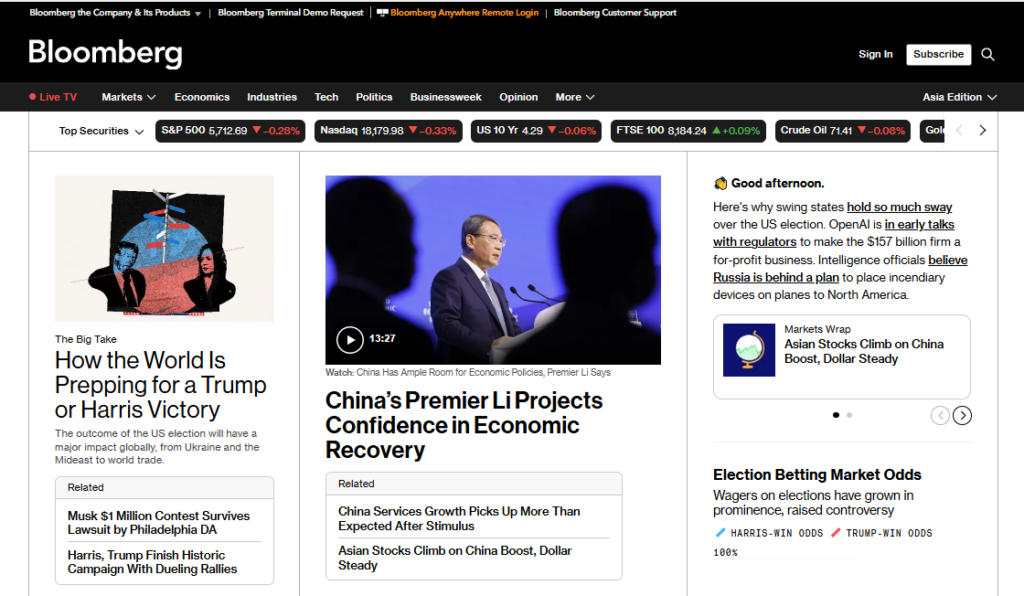For More Free Videos, Subscribe to the Rhodes Brothers YouTube Channel.
Have you ever felt a sense of unease about the unseen forces shaping our global economy? Do you wonder who truly holds the reins of power in the world of finance? This post will equip you with the knowledge and understanding to navigate this complex landscape, empowering you to make informed decisions about your financial future. We’ll delve into the intricacies of BlackRock, one of the world’s largest asset managers, and explore its surprising connections to the global financial system.

We’ll uncover the strategies and techniques used by major players like BlackRock, revealing how they wield influence and how you can understand and even leverage these dynamics for your benefit. We’ll explore the role of technology, the impact of major events like the 2008 financial crisis, and the implications for everyday investors and citizens alike.
Did you know that BlackRock manages over $9 trillion in assets? That’s a number so large it’s almost incomprehensible. This immense power isn’t just about the sheer size of their portfolio; it’s about the intricate web of connections and proprietary technology that allows them to influence global markets in profound ways.
As John S. Rhodes of the Rhodes Brothers aptly puts it, “Understanding the ownership is key to understanding the power of the technology, and they do go hand-in-hand. Power comes from not only money, but the movement of money, the allocation of money, how money is even perceived.”
TL;DR
- BlackRock manages trillions in assets, influencing global markets significantly.
- Bank of America’s indirect ownership of BlackRock through the Merrill Lynch acquisition is a key factor in its power.
- BlackRock’s Aladdin technology provides unparalleled insights into global financial activity.
- Governments rely on BlackRock’s expertise and Aladdin for financial guidance.
- Understanding these connections empowers you to navigate the complexities of global finance.
- You can learn to leverage this knowledge for personal financial advantage.
Deciphering BlackRock: A Deep Dive into its Influence
BlackRock, the world’s largest asset manager, wields immense influence over global finance. Understanding its rise to prominence and the mechanisms behind its power is crucial for navigating the complexities of the modern financial system. This deep dive explores BlackRock’s history, its key technologies, and its impact on global markets.
BlackRock’s Rise to Prominence: The 2008 Financial Crisis and Beyond
The 2008 financial crisis served as a pivotal turning point, not only for the global economy but also for BlackRock’s trajectory. While the crisis exposed deep-seated weaknesses in the financial system, it also created unprecedented opportunities for firms with the expertise and resources to navigate the ensuing turmoil. BlackRock, already a significant player in the asset management industry, found itself uniquely positioned to capitalize on this moment of upheaval.
Prior to the crisis, Merrill Lynch, a major investment bank, held a substantial stake in BlackRock. However, the crisis hit Merrill Lynch hard, pushing the firm to the brink of collapse. In a dramatic turn of events, Bank of America stepped in, acquiring Merrill Lynch in a government-backed bailout. This acquisition had a profound and largely unforeseen consequence: Bank of America inherited Merrill Lynch’s significant ownership in BlackRock.
This seemingly behind-the-scenes transaction fundamentally altered the power dynamics within the global financial system. Bank of America, a massive financial institution in its own right, now held a significant indirect stake in BlackRock. This strengthened BlackRock’s position considerably, providing it with access to vast resources and an even stronger network within the financial industry. The deal also highlighted the intricate interconnectedness of major financial institutions and the often opaque nature of bailout deals. The aftermath of the crisis saw BlackRock playing a central role in managing distressed assets and advising governments on financial stabilization strategies, further solidifying its position as a key player in global finance. The events of 2008 weren’t just a catalyst for BlackRock’s growth; they fundamentally reshaped the company’s relationship with the global financial system.
Tools and Examples:
- Financial News Archives: Examining news articles and financial reports from 2008 will reveal the details of the Merrill Lynch acquisition and its impact on BlackRock. Sources like the Wall Street Journal, Financial Times, and Bloomberg provide valuable historical data.
- SEC Filings: Reviewing BlackRock’s and Bank of America’s SEC filings (available on the SEC’s EDGAR database) provides official documentation of the ownership changes and financial transactions. This offers a transparent, albeit complex, view of the events.
- Documentary Films: Several documentaries explore the 2008 financial crisis and the role of major financial institutions. These films often provide insightful commentary and analysis of the events, offering a broader perspective.
Aladdin: The Technology at the Heart of BlackRock’s Influence
BlackRock’s proprietary technology, Aladdin, isn’t just a sophisticated software; it’s a powerful analytical engine that underpins much of BlackRock’s influence. This risk management and financial analysis system processes massive amounts of data, providing unparalleled insights into global markets. It’s far more than a simple spreadsheet program; it’s a complex system capable of modeling intricate financial relationships, predicting potential risks, and identifying opportunities.
The significance of Aladdin lies in its widespread adoption. It’s not just used internally by BlackRock; many of the world’s largest financial institutions, including Bank of America, JP Morgan Chase, and Citigroup, rely on Aladdin for their risk management and investment decisions. This creates a network effect; the more institutions use Aladdin, the more valuable the data becomes, strengthening BlackRock’s position and insights.
Think of Aladdin as a sophisticated, constantly updating map of the global financial system. It doesn’t just show where things are; it predicts where they’re going, highlighting potential risks and opportunities with remarkable accuracy. This predictive capability is what gives BlackRock its unique vantage point and allows them to anticipate market trends and manage risk with unparalleled precision.
Tools and Examples:
- Risk Management Software Comparisons: While Aladdin itself is proprietary, comparing its features to publicly available risk management software (like those offered by Bloomberg or Refinitiv) can provide a glimpse into its capabilities. Look for features related to portfolio optimization, stress testing, and scenario analysis.

- Data Analytics Platforms: Exploring publicly available data analytics platforms (like Tableau or Power BI) helps illustrate the power of big data analysis in finance. While these platforms don’t have Aladdin’s scope or sophistication, they demonstrate the potential of data-driven decision-making.
- Case Studies: Searching for case studies on successful risk management strategies in finance can provide examples of how data analysis and predictive modeling are used to make informed investment decisions.
Government Reliance and the Flow of Funds
Governments, facing the complexities of managing national economies and navigating financial crises, often turn to BlackRock for guidance and advice. This reliance isn’t solely based on BlackRock’s sheer size and assets under management; it’s also driven by the unique capabilities of Aladdin. Aladdin’s ability to process and analyze vast amounts of financial data provides governments with insights they might not otherwise possess.
This reliance creates a subtle but significant power dynamic. Governments, seeking expert advice, are effectively relying on a private entity—BlackRock—to help shape their financial policies. This dependence further cements BlackRock’s influence on global financial policy and the allocation of resources, raising questions about the balance of power between private entities and government institutions.
Tools and Examples:
- Government Financial Reports: Examining government financial reports and budget documents can reveal instances where BlackRock’s expertise or Aladdin’s capabilities were utilized. Look for mentions of consulting contracts or the use of specific analytical tools.
- Public Policy Documents: Analyzing public policy documents related to financial regulation or economic stimulus packages can reveal the influence of large asset managers like BlackRock on policy decisions.
- News Articles and Interviews: Searching for news articles and interviews with government officials discussing their reliance on private sector expertise in financial matters can provide further insights.
Drawing Parallels: BlackRock’s Aladdin and Palantir Technologies
John S. Rhodes’ comparison between BlackRock’s Aladdin and Palantir Technologies’ data analytics platform is insightful. Both companies leverage powerful technology to analyze vast amounts of data, providing insights that influence major decisions in both the private and public sectors. While their applications differ—Aladdin focuses on finance, Palantir on broader data analysis for government and commercial clients—the underlying principle is the same: the power of data-driven decision-making.
This parallel highlights a broader trend: the increasing importance of data analytics in shaping global finance and policy. The ability to process and interpret vast amounts of data provides a significant competitive advantage, influencing not only investment decisions but also government policies and regulatory frameworks.
Tools and Examples:
- Palantir’s Public Filings: Reviewing Palantir’s public filings (available on the SEC’s EDGAR database) can provide insights into their data analytics capabilities and the types of clients they serve.
- Comparative Analysis of Data Analytics Companies: Comparing the capabilities and market positions of various data analytics companies (like Palantir, BlackRock, and others) can help illustrate the growing importance of this technology sector.
- Industry Reports: Researching industry reports on the data analytics market, particularly those focusing on the financial services sector, can provide a broader understanding of the technological landscape and its impact on global finance.
The quote by Warren Buffett, “Price is what you pay. Value is what you get,” perfectly encapsulates the importance of understanding not just the surface-level aspects of companies like BlackRock but also the underlying value proposition created by their technology and strategic positioning. Understanding this value proposition is crucial to grasping their true influence on the global financial system.
Actionable Steps in Understanding and Leveraging BlackRock’s Influence
Understanding BlackRock’s influence isn’t just about passively observing; it’s about actively using that knowledge to make informed decisions about your financial future. This section provides actionable steps tailored to different demographics, empowering you to navigate the complexities of the global financial landscape.
Step-by-Step Guide for Beginners: Building a Foundation in Finance
Entering the world of finance can feel overwhelming, but with a structured approach, you can build a solid foundation for understanding BlackRock’s influence and its impact on your investments.
Educate Yourself: Begin with the fundamentals. Understanding basic financial concepts like asset classes (stocks, bonds, real estate), investment strategies (value investing, growth investing), and market indicators (interest rates, inflation) is crucial. There are numerous free online resources available, including Investopedia, Khan Academy, and the websites of reputable brokerage firms.
Tools & Resources: Investopedia, Khan Academy, YouTube channels dedicated to financial literacy.
Follow the News (Intelligently): Staying informed is vital, but avoid getting bogged down in sensationalized headlines. Focus on reputable financial news sources like the Wall Street Journal, Financial Times, Bloomberg, and Reuters. Pay attention to articles discussing BlackRock’s activities, major market trends, and regulatory changes.
Tools & Resources: Google News (customize your feed to focus on finance), reputable financial news websites and apps (Bloomberg, Yahoo Finance).
Analyze Trends (Beyond Headlines): Don’t just read the headlines; dig deeper. Analyze market trends and their potential connections to BlackRock’s activities. For example, if BlackRock is significantly increasing its holdings in a particular sector, it might indicate a bullish outlook on that sector. However, always consider other factors before making investment decisions.
Tools & Resources: Financial charting software (TradingView, StockCharts), economic data websites (FRED, World Bank).
Diversify Your Portfolio (Strategically): Diversification is a cornerstone of risk management. Don’t put all your eggs in one basket. Spread your investments across different asset classes and sectors to reduce your exposure to any single market downturn. Consider low-cost index funds or ETFs as a simple way to diversify.
Tools & Resources: Portfolio tracking apps (Personal Capital, Mint), online brokerage platforms (Fidelity, Schwab).
Seek Professional Advice (When Needed): A financial advisor can provide personalized guidance based on your individual circumstances, risk tolerance, and financial goals. While not necessary for everyone, professional advice can be invaluable, especially for complex financial situations.
Tools & Resources: Websites connecting you with financial advisors (e.g., websites of professional financial planning organizations).
Strategies for Millennials: Building Long-Term Wealth
Millennials benefit from a longer time horizon, allowing them to take on more risk in pursuit of higher returns.
- Long-Term Investing (Power of Compounding): Embrace the power of compounding. Investing early and consistently allows your returns to generate further returns over time, significantly boosting your wealth over the long term.
- Index Funds (Low-Cost Diversification): Low-cost index funds offer broad market exposure with minimal fees, making them an ideal choice for long-term investors.
- Ethical Investing (ESG Considerations): Align your investments with your values by considering ESG (environmental, social, and governance) factors. Many index funds and ETFs now offer ESG-focused options.
- Automate Savings (Effortless Investing): Set up automatic transfers to your investment accounts to make saving and investing effortless. This creates a disciplined approach to building wealth.
- Learn Continuously (Financial Literacy): The financial landscape is constantly evolving. Stay updated by reading books, articles, and attending webinars. Consider taking online courses to enhance your financial literacy.
Strategies for Those Nearing Retirement: Preserving and Protecting Wealth
As retirement approaches, the focus shifts from growth to preservation and income generation.
- Risk Management (Capital Preservation): Prioritize preserving your capital and minimizing risk. Consider shifting your portfolio towards less volatile investments like bonds and fixed-income securities.
- Income Generation (Retirement Income): Focus on investments that generate consistent income to support your retirement lifestyle. Dividend-paying stocks, bonds, and annuities can provide a steady stream of income.
- Tax Optimization (Minimizing Tax Burden): Consult with a tax advisor to minimize your tax liability in retirement. Tax-efficient investment strategies can significantly impact your after-tax income.
- Estate Planning (Protecting Your Legacy): Ensure your assets are distributed according to your wishes. A well-structured estate plan can protect your family’s financial future.
- Healthcare Planning (Long-Term Care): Factor in healthcare costs into your retirement planning. Long-term care insurance or other strategies can help mitigate the financial burden of potential healthcare expenses.
By implementing these strategies, you can effectively navigate the complexities of the financial world, leveraging your understanding of BlackRock’s influence to make informed decisions that benefit your financial future. Remember, continuous learning and adaptation are key to long-term success.
Common Mistakes to Avoid in Understanding and Leveraging BlackRock’s Influence
Even with a solid understanding of BlackRock’s influence and the broader financial landscape, it’s easy to fall into common traps. Avoiding these pitfalls is crucial for making sound investment decisions and achieving your financial goals.
Ignoring Diversification: The “All Eggs in One Basket” Fallacy: This is perhaps the most common and costly mistake. Concentrating your investments in a single asset class, sector, or even a single company exposes you to significant risk. If that asset underperforms or experiences a downturn, your entire portfolio can suffer. Diversification spreads your risk across multiple assets, reducing the impact of any single negative event.
- Example: Investing heavily in a single tech stock because you believe in the company’s future might seem appealing, but if the tech sector experiences a downturn, your entire portfolio could be severely impacted. Diversification across various sectors (tech, healthcare, consumer goods, etc.) would mitigate this risk.
- Solution: Develop a diversified portfolio encompassing various asset classes (stocks, bonds, real estate, etc.) and sectors. Consider low-cost index funds or ETFs as a simple way to achieve broad diversification.
Emotional Investing: Letting Fear and Greed Dictate Your Decisions: Market fluctuations are inevitable. Fear and greed can lead to impulsive decisions, often resulting in poor investment outcomes. Fear can cause you to sell during market downturns, locking in losses, while greed can tempt you to chase hot stocks, potentially leading to overvalued investments.
- Example: Selling your stocks during a market correction out of fear, only to see the market recover shortly after. Or, buying into a hyped-up stock at its peak, only to watch its price plummet.
- Solution: Develop a long-term investment strategy and stick to it. Avoid making impulsive decisions based on short-term market fluctuations. Consider dollar-cost averaging to mitigate the impact of market volatility.
Chasing Trends: The Illusion of Easy Profits: Blindly following market trends without proper research and analysis is a recipe for disaster. What might seem like a sure thing can quickly turn sour. Successful investing requires careful research, understanding underlying fundamentals, and assessing risk.
- Example: Investing heavily in cryptocurrency because of its recent price surge, without understanding the underlying technology or the inherent volatility of the market.
- Solution: Conduct thorough research before investing in any asset. Understand the fundamentals of the company or market you’re investing in. Consider the potential risks and rewards before committing your funds.
Lack of Due Diligence: Failing to Research Before Investing: Investing without proper research is like gambling. You might get lucky, but the odds are stacked against you. Thorough due diligence involves understanding a company’s financial statements, its competitive landscape, and its management team.
- Example: Investing in a company based solely on a friend’s recommendation without verifying the company’s financial health or its long-term prospects.
- Solution: Always conduct thorough research before making any investment decision. Review financial statements, read analyst reports, and understand the company’s business model and competitive advantages.
Ignoring Professional Advice: The “I Can Do It Myself” Trap: While many resources are available for self-directed investors, seeking professional advice from a qualified financial advisor can be invaluable. A financial advisor can provide personalized guidance based on your individual circumstances, risk tolerance, and financial goals.
- Example: Trying to manage a complex portfolio without the expertise of a financial advisor, leading to suboptimal investment decisions.
- Solution: Consider consulting with a qualified financial advisor, especially if you’re managing a significant amount of assets or have complex financial needs. A financial advisor can offer objective guidance and help you develop a comprehensive investment strategy.
By understanding and avoiding these common mistakes, you can significantly improve your chances of achieving your financial goals and effectively navigating the complexities of the global financial system, even amidst the influence of major players like BlackRock.
Frequently Asked Questions
How can I learn more about BlackRock’s activities?
Follow financial news outlets, research BlackRock’s public filings, and explore resources like their investor relations website.
Is BlackRock’s influence a cause for concern?
BlackRock’s size and influence are undeniable. Whether this is a cause for concern depends on your perspective and understanding of the complexities of global finance.
How can I protect myself from potential risks associated with BlackRock’s influence?
Diversify your portfolio, stay informed about market trends, and seek professional financial advice.
What are the ethical implications of BlackRock’s actions?
This is a complex question with varying viewpoints. Consider ESG factors when making investment decisions.
How does Aladdin technology work?
Aladdin is a complex proprietary system, but its core function is to analyze vast amounts of financial data to manage risk and anticipate market trends.
Can I access Aladdin?
No, Aladdin is a proprietary system not available to the public.
How does BlackRock’s influence affect the average person?
BlackRock’s actions can impact market prices, investment opportunities, and even government policies, indirectly affecting individuals’ financial well-being.
What are some alternative asset management firms?
Vanguard, Fidelity, and State Street are some of BlackRock’s major competitors.
Is it possible to profit from understanding BlackRock’s strategies?
While directly profiting from BlackRock’s internal strategies is impossible, understanding their influence can inform your investment decisions and risk management strategies.
How can I stay updated on the latest developments in global finance?
Follow reputable financial news sources, subscribe to relevant newsletters, and consider taking online courses or attending webinars.
Taking Control: Your Next Steps in Understanding Global Finance
This deep dive into BlackRock’s influence has revealed a complex interplay of ownership, technology, and global power dynamics. The key takeaway isn’t about fear-mongering, but empowerment. By understanding these dynamics, you can make more informed decisions about your financial future.
Remember these crucial points:
- BlackRock’s size and influence are undeniable: Understanding this influence allows you to better interpret market trends and make more informed investment choices.
- Technology plays a central role: Tools like Aladdin provide unparalleled insights into global finance, highlighting the importance of data-driven decision-making.
- Diversification is key: Spread your investments across different asset classes and sectors to mitigate risk.
- Continuous learning is essential: The financial landscape is constantly evolving; stay updated through reputable sources.
- Seek professional advice when needed: A financial advisor can provide personalized guidance tailored to your specific circumstances.
Ready to take control of your financial future? Start by taking one small step today. Educate yourself on the basics of investing, follow reputable financial news sources, and begin diversifying your portfolio, even if it’s just a small amount.
Thank you for joining us on this exploration of BlackRock and the global financial system. We hope this article has provided you with valuable insights and empowered you to make more informed financial decisions. To stay updated on the latest developments in finance and gain further insights into the forces shaping our global economy, we encourage you to view and subscribe to the Rhodes Brothers YouTube Channel for more insightful videos and analysis.
Resource List
This list provides resources to further your understanding of BlackRock, global finance, and effective investment strategies.
Books
- “The Intelligent Investor” by Benjamin Graham: A classic text on value investing.
- “A Random Walk Down Wall Street” by Burton Malkiel: Explains the principles of market efficiency and long-term investing.
- “You Can Be a Stock Market Genius” by Joel Greenblatt: Explores various investment strategies, including special situations.
- “The Little Book of Common Sense Investing” by John C. Bogle: Advocates for low-cost index fund investing.
- “Principles: Life and Work” by Ray Dalio: Offers insights into the principles of success in various fields, including finance.
Courses & Webinars
- Coursera & edX: Offer various courses on finance, investing, and economics.
- Khan Academy: Provides free courses on financial literacy.
- Investopedia Academy: Offers courses on various investment topics.
- Many reputable brokerage firms: (e.g., Fidelity, Schwab, Vanguard) offer free educational resources and webinars.
Podcasts
- Planet Money (NPR): Covers various economic and financial topics in an accessible manner.
- Invest Like the Best (Patrick O’Shaughnessy): Interviews successful investors and discusses their strategies.
- The Motley Fool Money: Offers insights and analysis on various investment opportunities.
Tools & Software
- Personal Capital: A free financial planning and portfolio tracking tool.
- Mint: A free budgeting and financial tracking app.
- TradingView: A charting and analysis platform for tracking market trends.
- Bloomberg Terminal (Professional): A comprehensive financial data and analytics platform (subscription required).
- Refinitiv Eikon (Professional): Another comprehensive financial data and analytics platform (subscription required).
This list is not exhaustive, but it provides a strong starting point for your continued learning and exploration of the world of finance. Remember that continuous learning and adaptation are essential for navigating the ever-changing financial landscape.






